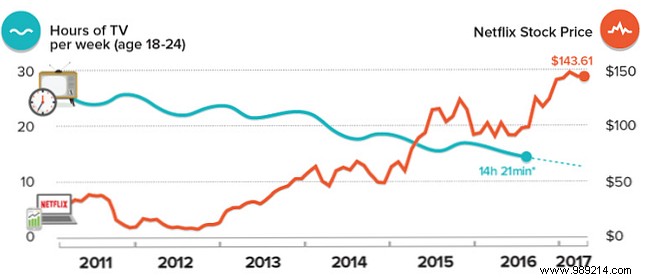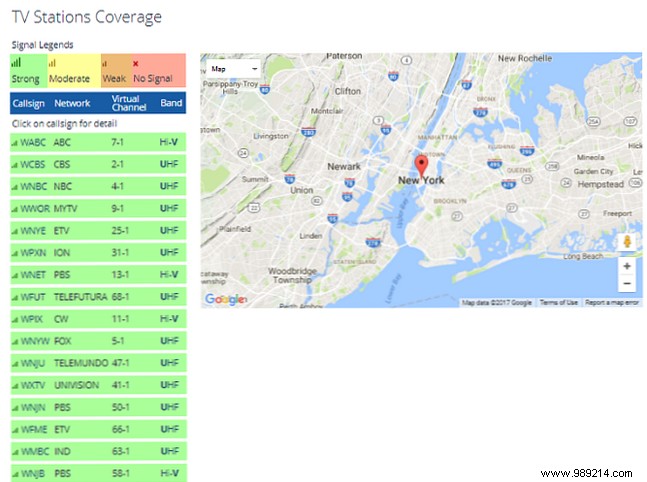Today, the average American household pays $103 per month for cable television. Throw in a Netflix subscription ($8), a Sling subscription ($20), and a bespoke service or two, and you're looking at a lot of cash.
Recent years have seen a revolt against high costs. Lace cutting is becoming more and more popular. Everyone else is cutting the cord, why aren't you? Everyone else is cutting the cord, so why isn't it you? I cut the cord in 2013 and more and more people are following suit, ditching their cable service altogether. But not everyone is cutting the rope, and we decided to find out why... Read More
But what if there was an easy, cheap, legal and reliable way to gain access to many of the big networks? You would probably turn around.
Well, it turns out there is! The trusty TV antenna advances. (Admit it, you would have forgotten they even existed, right?) Let's take a closer look at how a TV antenna works and what you can watch using one.
Think back to 2005. Nobody had high-speed internet, Twitter was just a gleam in Jack Dorsey's eye, and Netflix only delivered DVDs by mail.
How did you watch TV? If you were lucky, you had a cable subscription. If you weren't, you used an antenna..
Go back even further:In the '70s and '80s, cable TV was a luxury. In 1980, only 20 percent of American homes had a cable connection. Almost everyone got their dose of entertainment using an over-the-air (OTA) antenna.

It wasn't until the late 1980s that most households had a cable subscription. According to a 1989 New York Times In the article, 300,000 new households signed up each month. Oh, and the average cost of return then? A mere $24.26 per month.
Fast-forward to today, and cable is ubiquitous. Only 12.9 percent of American adults have never signed up for a cable or satellite television service.
If you were born between the early 1980s and late 1990s, you are a millennial:the oldest members of the cohort are in their 30s, the youngest in their 20s.
If you're a millennial, you're facing the highest education costs (and debt), the most expensive housing, and the toughest job market in history. You came of age in the uncertain time after 9/11 and were probably entering the workforce when the 2008 financial crisis hit.
Thus, for many millennials, cable TV has returned to “luxury” status once again. In fact, even subscriptions to comparatively cheap services like Netflix 10 Niche Streaming Services For Those Who Hate Netflix 10 Niche Streaming Services For Those Who Hate Netflix Mainstream streaming services carry mainstream content. What can you do if you want to see something a little less conventional? You better check out these alternative streaming services full of niche content. Read More Of the 12.9 percent of adults who have never signed up for cable service, most are under the age of 35.

Young people are also watching less television. Whether it's a cause or a symptom of the decline in cable subscriptions is debatable, but immaterial.
Research from Visual Capitalist states that as recently as 2011, the average person between the ages of 18 and 24 watched 25 hours of television per week. Today, the figure has been reduced to 14 hours. If you're under 24, Netflix is now your preferred viewing method. On average, you spend up to four hours a day watching YouTube and just one hour watching traditional TV.
Suddenly, the prospect of spending $103 a month on something you'll wear for just 30 hours seems hugely unattractive.
And so, back to the antenna. There are countless reports that traditional antenna sales are on the rise. The Denver Post interviewed an antenna technician who stated that he was now twice as busy as he was three years ago..
The American Association for Consumer Technology agrees with his anecdotal evidence. He says that in 2007, about three million antennas were sold throughout the country. In 2016, the figure jumped to 7.6 million. And in 2017, he predicts the market will grow a further 9.7 percent.
Although millennials are driving sales, there has undeniably been a widespread rediscovery of technology from decades ago. The National Association of Broadcasters says that just 29 percent of Americans weren't even aware that local and network TV was free to watch.
So what exactly can you see?
Much depends on your location. Signal quality can vary widely from location to location. Remember, we are now in an era of digital television antennas. Unlike analog antennas, which could still deliver something like an on-screen image even if the signal was poor, digital antennas with poor reception will constantly cut out and therefore transmissions will be virtually invisible.
If you're not sure what the signal is like in your area, check out the free tool from the Federal Communications Commission.

Generally speaking, if you live in a big city, you will definitely have access to NBC, CBS, ABC, Fox, and The CW. The five commercial networks reach 97 percent of American homes. PBS hits 96 percent.
Other networks that can reach more than 70 percent of US households include PBS Kids, Create, MyNetworkTV, MeTV, Antenna TV, Escape, Grit, Laff, This TV, Bounce TV, Ion Television, and Ion Life. There are hundreds of smaller networks, many of which can comfortably reach more than 50% of households.
As any experienced cable cutter will know, the two biggest hurdles to consider are 7 First, before cutting cable to save money, there are a few things to consider. aware of. Read More 5 Free Streaming News Channels for Cord Cutters 5 Free Streaming News Channels for Cord Cutters One of the biggest drawbacks of canceling cable TV is the availability of news. Or the lack of it. Fortunately, things are changing, and there are plenty of free cord-cutter news channels here. Read more and sports broadcasts. Both need to be shown live to mean anything.
But don't be discouraged. OTA TV offers both. The Big Five networks offer more than 200 region-specific channels, many of which are local news.
When it comes to sports, the selection of content may surprise you. In the last 12 months, antenna viewers have been able to enjoy the Super Bowl, the NBA Finals, the US Open, the Stanley Cup playoffs, the UEFA Champions League final, the French Open, the CONCACAF Gold Cup and the nearly endless NASCAR races and MLB games.
Note: Some of these events are region specific. You may experience blackouts when your local team is playing.
If you're thinking of buying a TV antenna, you have two options:a ceiling-mounted model or an indoor wall-mounted model.
As expected, outdoor antennas have better reception. If you live in an area with poor signal quality, your best bet is a rooftop antenna.
If you want a model with a roof, you should talk to a professional. However, a few guidelines can give you a rough idea of which antenna you'll need. The Consumer Technology Association has teamed up with AntennaWeb.org and produced a how-to guide. Visit the site, enter your address, and you'll see a list of channels available in your area.
More importantly, they will be color coded based on signal strength. Yellow or green means that a standard antenna should suffice. Blue, red, or purple means you'll need a more powerful model.

Indoor antennas are cheaper but less powerful. In major cities they should be fine, but in rural areas, you may not be able to enjoy the full range of channels.
There are many models to choose from, but one of the most recommended is the Mohu blade. It costs $39.95 on Amazon.
Mohu Leaf 30 Indoor HDTV Antenna, 40 Mile Range, Original Thin Paper, Reversible, Paintable, 4K Ready, 10ft Detachable Cable, Premium Materials, Made in USA, MH-110583 Indoor TV Antenna Mohu Leaf 30 Indoor HD, 40 Mile Range, Original, Paper-Thin, Reversible, Paintable, 4K Ready, 10ft Detachable Cable, Premium Materials for Performance, Made in the USA, MH -110583 Buy Now On Amazon $27.18
OK, let's summarize things. Over-the-air channels are free to watch, require a one-time purchase of a suitable antenna, and provide access to all major commercial networks. They'll give you access to news and sports, as well as the usual diet of comedy, chat shows, and movies.
Only one question remains:why are you still paying $103 per month for cable? Should you cut the cord or keep cable TV? Should you cut the cord or keep your cable TV? If you're still stuck with your cable subscription, but are debating whether it's time to make a switch, we're here to help. This guide will help you decide. Read more ?
Have you joined the antenna resurgence? How has your experience been so far? What do you miss about cable TV? As always, you can leave your thoughts in the comments below. And remember to share this article with other cord cutters on social media. If they don't know how much free TV an antenna offers, then they'll thank you for giving them a hint.